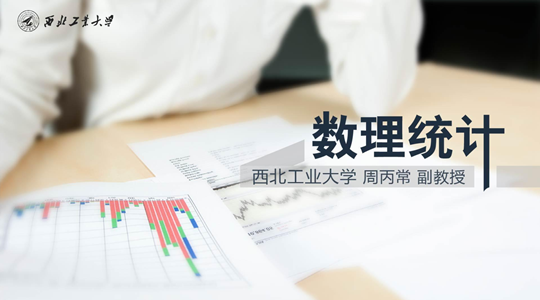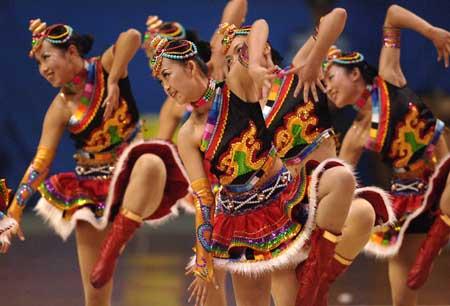
当前课程知识点:Methodology of Scientific Research > Lecture 3 Scientific Research Methods and Thinking Modes > Section 3.2 Typical Thinking Modes > 3.2.2 General Innovative Thinking
返回《Methodology of Scientific Research》慕课在线视频课程列表
返回《Methodology of Scientific Research》慕课在线视频列表
下面给大家介绍创新思维的内容
首先介绍创新的概念
什么是创新 大家经常提到创新
创新是一个非常古老的概念
英文叫 innovation
该词起源于拉丁语
我们认为创新包括至少三层的含义
第1个是创造 创造也就是由无到有
第2个是更新 更新的意思是以新代旧
第3个是改变 也就是故而思变
改变一些形貌或者是其它的内在的因素 等等
创新作为一种理论 最初形成于20世纪
1912年 美国的哈佛大学教授Schumpeter
在他的德文著作 经济发展理论 当中
首次提出了创新的概念
Schumpeter认为创新就是把生产要素
和生产条件的新组合引入生产体系
也就是建立一种新的生产函数
它的目的是为了获取潜在的利润
那么下面介绍一下创新思维
我们教学团队认为创新思维是
科学思维体系当中的重要组成部分
也是最具活力的科学思维形式
有关创新思维的概念
国内外的学者有很多的一些观点
目前学术界对创新还没有一个统一的定义
以下是我们教学团队归纳的几种
对创新思维的解释
第1个是 创新思维是在非常规的刺激下
通过非逻辑的思考方式产生的顿悟或启迪
这种解释强调了思维活动当中
灵感 直觉 想象等因素的关联和激发作用
第2个是 创新思维是对常规思维的一种突破
它是逆常规思维认识事物的一种新的思维方式
创新思维的产生
通常是在偏离正常思维的轨迹上实现的
比如说反向思维 发散思维等等
第3个解释是创新思维是一种与生俱来的天赋
这种解释可能是有点片面性
它强调了人的天赋的作用
而忽视了后天的学习和训练
当然了 天赋是很重要的
但是若没有知识的进一步的学习和经验的长期积累
以及技术的培训等等 这样的一些后天的训练
那么创新思维一般是无从谈起的
第4个解释是创新思维
是思维发散与收敛交替轮回的作用过程
这种解释给出了一种
创新思维产生过程的新模式
但它也仅仅是揭示了创新思维的一个特征而已
第三 我们给大家介绍特征及其形式
创新思维的基本特征是什么样的呢
它的基本特征主要有三个方面 第1个是创新性
第2个是批判性 第3个是灵活性
创新性是创新思维的
基本特征和主要标志
评价创新性最重要的指标
是思维成果的新颖程度
那么其中创新程度的最高级别是什么
是独创 独一无二的创造
第2个是批判性
研究者在发现新事物 新事实
与既有知识 经验和定律相矛盾
且采取常规思维方式无法解决矛盾的时候
创新思维的批判性就显得特别的重要
第3个是灵活性
灵活性主要是指研究者的思维活动
不受常规思维的定式的束缚与局限
并且能够根据具体的科研对象
自由地 灵活地采用多种思维方式
来探索问题的答案
不拘一格 不落俗套 标新立异
第2个是创新思维的基本形式
科研过程是一个创新过程
该过程的完成往往需要采取多种
科研方法和思维方式
而其中的创新思维并非以单一的形式来出现
而是经常表现为多种形式思维的一种综合运用
我们教学团队根据多年的科研经验
归纳出以下三种创新的思维的基本形式
第1个是弹性思维
弹性思维是指思维在广度和深度层面上具有
弹性的这样的特点的思维方式
代表性的弹性思维方式包括发散思维
收敛思维和联想思维 等等
第2个叫多元思维
就是多元化 多方向的
指思维的指向不拘泥于单一的方向去分析
去探索问题的思维方式
从一维思维空间的指向考虑
具体有比如说正向的思维
还有反向思维或叫逆向思维
从多维思维的空间指向考虑
有类比思维 水平思维和纵向思维等等
第3个是跳跃思维
这个幅度比较大
跃变的跳跃思维
指的是直接越过逻辑思维的某些既定的环节
或改变某些操作的步骤
非常规地获得的一些结论
跳跃思维是非循环的 非循序渐进的思维过程
其跳跃性会带来认识上的某种突变或飞跃
跳跃思维有许多具体的形式
比如说灵感 直觉 想象 感悟等等
第三是创新思维基本过程
法国著名的数学家彭加勒认为
创造性的科学思维活动一般是三段式的
它需要经历问题提出阶段
也就是思维的有意识活动阶段
第2个是探索创造阶段
这个阶段是思维的无意识活动阶段
和最后的整理完善阶段
思维的有意识的活动阶段
这三个基本过程
-Section 1.1 Basic Concepts of Scientific Research
--1.1.1 Basic Concepts of Research
-Section 1.2 General Procedure of Scientific Research
--1.2.3 Process of Natural Science
--1.2.4 Process of Social Science
--1.2.5 Process of Technologial Science
-Section 1.3 How to Prepare for Scientific Research
--1.3.1 Motivation of Research
-Test-Lecture #1
-Section 2.1 Types and Sources of Research Project
-Section 2.2 Principles and Methods of Topic Selection
--2.2.1 Principle of Topic Selection
--2.2.2 Methods of Topic Selection
--2.2.3 Procedure and Strategy of Topic Selection
-Section 2.3 Information Collection of Project
--2.3.1 Type, Collection and Search of Information
-Test-Lecture #2
-Section 3.1 Typical Research Methods
--3.1.1 Level of Research Method
--3.1.2 Concept of Research Method
--3.1.3 Typical Research Methods
-Section 3.2 Typical Thinking Modes
--3.2.1 Thinking and its Characteristics
--3.2.2 General Innovative Thinking
--3.2.3 Typical Thinking Modes
-Section 3.3 Analysis of Research Cases
--3.3.1 Question Description and Concept
--3.3.2 Three-Level Theory of Problem
--3.3.3 Train of Question Consciousness
-Test-Lecture #3
-Section 4.1 Research-oriented Scientific Design
--4.1.1 General Scientific Design
--4.1.3 Example of Research Design
--4.1.4 Other kinds of Research Design
-Section 4.2 Experimental Scientific Research Design
--4.2.4 Example of Experimental Design
-Section 4.3 Application-oriented Scientific Design
--4.3.1 Basic Concepts and Significance
--4.3.3 Example of Applied Design
--4.3.4 Train of Research Skills
-Test-Lecture #4
-Section 5.1 Initial Entry into the Research Group
--5.1.2 Consider Research Outline
-Section 5.2 Analysis of Scientific Research Cases
--5.2.1 Example of Correct Topic Selection
--5.2.2 Example of Team Cooperation
--5.2.3 Test of Non-invasive PDM
-Section 5.3 Research-based Learning and Research
--5.3.1 Overview of Research Learning
--5.3.2 Research-based Learning
--5.3.3 Research Train for Undergraduates
-Test-Lecture #5
-Section 6.1 Scientific Research Strategy and Tactics
--6.1.1 Strategy in Research Work
--6.1.2 Tactics in Research Work
--6.1.3 Research Group and Management
-Section 6.2 Scientific Research Tactful Operation
--6.2.3 Typical Research Planning
-Section 6.3 Discrimination of Research Obstruction
--6.3.2 Origin of Research Obstruction
--6.3.3 Case of Research Obstruction
--6.3.4 Strategy to Remove Obstruction
-Test-Lecture #6
-Section 7.1 Research Papers and Writing
--7.1.2 Writing Research Paper
-Section 7.2 Rules for Submission and Publication
--7.2.1 Preparing for Contribution
--7.2.2 Process of Publication
--7.2.3 Strategy of Contribution
-Section 7.3 Examples and Analysis of Paper
--7.3.1 Basic Structure of Paper
--7.3.3 Introduction, Main Content and Conclusion
-Test-Lecture #7
-Section 8.1 Introduction of Invention and Creation
--8.1.1 Generality of Invention
--8.1.2 Principle of Invention
--8.1.3 Risk and Protection of Invention
-Section 8.2 Patent Types and Applications
--8.2.1 Characteristics and Types of Patent
--8.2.3 Process of Applying Patent
-Section 8.3 Patent Examples and Analysis
--8.3.1 Example of Invention Patent
--8.3.2 Example of Utility Model Patent
--8.3.3 Example of Design Patent
-Test-Lecture #8
-Section 9.1 Characteristics, Types and Titles of Academic Conferences
--9.1.1 Characteristisc of Academic Conference
--9.1.2 Types of Academic Conference
--9.1.3 Title of Academic Conference
-Section 9.2 Basic Elements and Report Types of Academic Conferences
--9.2.1 Basic Elements of Conference
--9.2.2 Types of Conference Report
-Section 9.3 Main Points, Syntax and Summary of Academic Reports
--9.3.1 Writing and Accepting Conference Paper
--9.3.2 Exercise before Reporting
-Test-Lecture #9
-Section 10.1 Character and Type of Researcher
--10.1.1 Basic Moral of Researcher
--10.1.2 Moral Outlook of Researcher
--10.1.3 Talent Type and Innovative Quality
-Section 10.2 Research Ethics and Academic Norms
--10.2.1 Generality of Research Morality
--10.2.3 Monitoring Measure of Research
-Section 10.3 Research Relationship and Incentive Mechanism
--10.3.1 Generality of Research Relation
--10.3.2 Typical Research Relation
--10.3.3 Research Incentive System
-Test-Lecture #10




